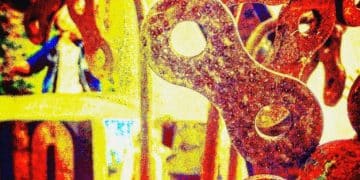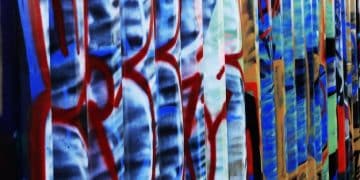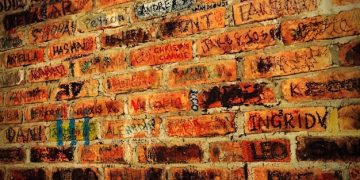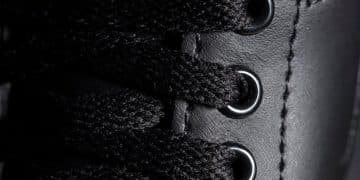Graffiti Art Authentication: Spotting Fakes and Protecting Your Investment in 2025
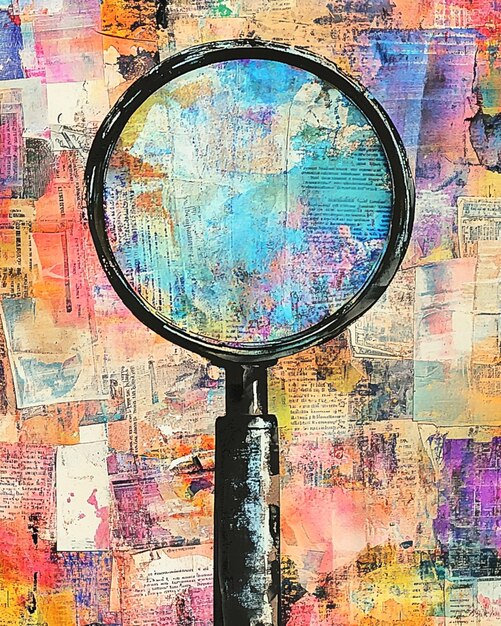
Graffiti art authentication in 2025 involves a multi-faceted approach, combining forensic analysis, provenance research, artist interviews, and digital verification to protect investments in a market increasingly plagued by sophisticated forgeries.
In the vibrant and often illicit world of street art, Graffiti Art Authentication: Spotting Fakes and Protecting Your Investment in 2025 has become an increasingly critical, and complex, endeavor. As the market for graffiti art flourishes, so too does the sophistication of those looking to profit from deception, making astute verification more vital than ever.
Understanding the Evolving Graffiti Art Market in 2025
The graffiti art market in 2025 is a dynamic ecosystem, characterized by rapid growth, increasing institutional recognition, and a burgeoning collector base. Once relegated to the fringes, street art now commands significant prices at auction houses and galleries worldwide, leading to both exciting opportunities and substantial risks. This evolution has brought with it an unprecedented need for rigorous authentication processes.
The very nature of graffiti – often created illicitly, ephemeral, and geographically fragmented – poses unique challenges for collectors and experts alike. Unlike traditional fine art, which often benefits from documented exhibition histories and clear chains of ownership, many graffiti pieces emerge from a more clandestine background. This inherent lack of conventional provenance makes them particularly vulnerable to counterfeiting.
The Rise of Art Forgery in the Digital Age
With advancements in printing technologies and digital manipulation, forgers are now more adept than ever at creating convincing replicas. The internet further complicates matters, enabling the rapid dissemination of images and facilitating anonymous transactions, making it easier for counterfeit pieces to enter the market undetected. This digital aspect necessitates a strong understanding of both physical and virtual verification methods.
* Improved digital printing techniques.
* Sophisticated aging processes for materials.
* Online marketplaces facilitating anonymous sales.
* Difficulty in tracing original contexts and creators.
The high stakes involved mean that collectors, galleries, and auction houses must invest in robust authentication protocols. Failure to do so can result in significant financial losses, damage to reputation, and erosion of public trust in the authenticity of a burgeoning art form. Thus, specialized expertise in graffiti art authentication has become an indispensable asset in navigating this complex landscape.
Protecting investments in 2025 requires not just an appreciation for the art form, but a keen eye for detail, a deep understanding of artistic practices, and access to cutting-edge forensic tools. The market’s growth is a testament to the power of this art, but its vulnerabilities demand vigilance and expertise.
Deciphering Artist Signatures and Stylistic Traits
One of the foundational pillars of graffiti art authentication lies in the meticulous examination of the artist’s signature and their idiosyncratic stylistic traits. Every graffiti artist, particularly those with established reputations, develops a unique ‘hand’ – a distinctive way of writing their tag, shaping their letters, and deploying their signature colors and motifs.
This artistic fingerprint is often the first line of defense against counterfeits. An authentic signature is more than just a name; it’s an integral part of the artwork itself, reflective of the artist’s technique, pressure, flow, and chosen tools. Examining these elements requires trained eyes and a profound familiarity with the artist’s body of work across different periods.
Analyzing Signature Nuances
Forgers often struggle to perfectly replicate the subtle nuances that define an artist’s signature. This includes the speed of execution, the consistency of paint application, the specific angles and curves of letters, and even the natural imperfections that characterize genuine work. Experienced authenticators look for discrepancies in these minute details. For instance, a signature that appears too labored, too perfect, or too hesitant compared to known authentic examples can be a red flag.
* Line Quality: Observe the fluidity, thickness, and consistency of lines.
* Letter Formation: Compare specific letter shapes and connections.
* Pressure and Flow: Analyze how the artist applies pressure and the natural movement of their hand.
* Tool Marks: Identify marks left by specific markers or spray cans.
Furthermore, analyzing stylistic traits extends beyond the signature to the entire composition. This involves studying common themes, color palettes, character designs, and even the types of surfaces the artist typically works on. Does the piece align with the artist’s known artistic periods and evolution? Is the application of paint consistent with their preferred methods? These questions help to build a comprehensive picture of authenticity.
The sheer volume of an artist’s legitimate output allows experts to discern patterns and deviations. By compiling extensive archives of verified signatures and works, authenticators create reference points that are invaluable in detecting anomalies in potential fakes. This deep dive into an artist’s unique visual language is paramount for accurate assessment.
The Imortance of Provenance and Exhibition History
In the realm of graffiti art authentication, establishing a robust chain of provenance and a verifiable exhibition history is absolutely critical. Provenance refers to the chronological record of ownership or location of a work of art, a documented history that establishes its authenticity and ownership. For traditional art, this often involves extensive paperwork, but for graffiti art, it can be a more challenging, yet equally vital, endeavor.
A strong provenance acts as a historical roadmap for the artwork, tracing it back to the artist’s studio or, in the case of street art, its original site of creation, and subsequently through legitimate hands. Any gaps or inconsistencies in this record immediately raise red flags and warrant further scrutiny. Without clear documentation, it becomes significantly harder to verify the legitimacy of a piece, making it a prime target for counterfeiters. This becomes even more salient for pieces created on ephemeral surfaces then transferred to canvas or other permanent mediums.
Challenges in Documenting Graffiti Provenance
Given the often-illicit and transient nature of graffiti, a perfect, unbroken provenance is rarely achievable in the same way it might be for a Renaissance painting. However, modern authentication in 2025 has adapted, leveraging digital tools and community knowledge. This includes:
* Early photographs: Images of the artwork in its original street context.
* Artist statements: Direct confirmation from the creator.
* Witness testimonies: Accounts from individuals present at its creation or early acquisition.
* Exhibition catalogs and sales records: Formal documentation from reputable galleries or auctions.
The exhibition history, closely tied to provenance, provides further validation. If a piece has been included in known, recognized exhibitions focusing on the artist or the genre, it lends significant credibility. These public displays often come with curatorial research and expert review, effectively vouching for the artwork’s authenticity. A documented display record from reputable institutions or galleries strengthens the artwork’s historical context and reduces the likelihood of it being a forgery.
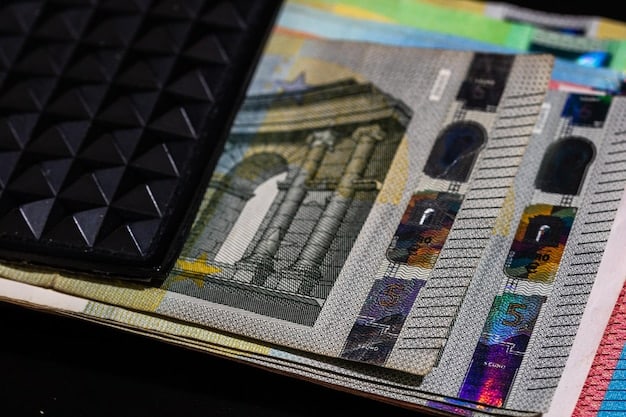
Collectors should always request detailed provenance documents and cross-reference them with independent sources. A piece with a continuous, well-documented history is generally a safer investment. Conversely, a piece lacking any traceable history from its creation to its current ownership should be approached with extreme caution, regardless of how compelling it appears stylistically.
Advanced Forensic Analysis for Material Verification
In 2025, advanced forensic analysis has become an indispensable layer in the multifaceted process of Graffiti Art Authentication: Spotting Fakes and Protecting Your Investment in 2025. This scientific approach moves beyond stylistic judgments and delves into the physical composition of an artwork, offering irrefutable data on its age, materials, and techniques. It’s a critical tool for detecting sophisticated forgeries where visual cues alone might be insufficient.
Forensic analysis employs a range of non-invasive and micro-invasive techniques to examine paint pigments, binders, mediums, and the substrate itself. The goal is to determine if the materials used are consistent with the artist’s known practices during the period the artwork was supposedly created. Anachronistic materials – pigments or aerosol propellant types that didn’t exist at the time of creation – are definite indicators of a fake.
Key Forensic Techniques Utilized
Modern authentication laboratories leverage a suite of scientific tools to scrutinize every aspect of a graffiti artwork:
* Spectroscopy (FTIR, Raman): Identifies the molecular composition of pigments and binders, revealing exact chemical signatures and any inconsistencies with an artist’s typical materials.
* X-ray Fluorescence (XRF): A non-destructive method that analyzes elemental composition, useful for detecting specific metals in paint (e.g., lead white, cadmium red) and comparing them to known formulations from different eras.
* Gas Chromatography-Mass Spectrometry (GC/MS): Can separate and identify volatile organic compounds in paints, helping to determine the age and type of aerosol used, or if modern solvents were introduced.
* Microscopy: High-magnification observation of paint layers, brushstrokes, and surface textures can reveal layering inconsistencies or modern paint applications pretending to be older.
The advantage of forensic analysis is its objectivity. It provides concrete scientific evidence that can either confirm or deny the authenticity of a piece, often bypassing the subjective interpretations that can sometimes influence aesthetic judgments. Forgers are constantly trying to mimic authentic materials, but scientific methods continue to evolve, making it harder for them to succeed.
For instance, an artwork attributed to a 1980s graffiti pioneer might be subjected to analysis to ensure the aerosols used match those available in that decade, or that the pigments are not synthetic formulations developed much later. This scientific rigor provides a crucial layer of security, safeguarding valuable investments against incredibly deceptive imitations.
Interviewing the Artist: Direct Confirmation and Insights
Beyond the physical and historical evidence, direct engagement with the artist often provides one of the most compelling and authoritative forms of authentication. In 2025, for living graffiti artists or those with verifiable estates, a direct interview or statement of authenticity can be invaluable for Graffiti Art Authentication: Spotting Fakes and Protecting Your Investment in 2025. This approach taps directly into the artist’s memory, intentions, and personal records, which no forger can truly replicate.
An interview allows the authenticator to ask specific questions about the artwork’s creation, its context, the materials used, and any unique circumstances surrounding its production. Artists often have detailed memories of their significant works, including specific anecdotes that corroborate the piece’s history. This direct testimony builds an unassailable layer of verification that complements other forensic and provenance research.
Key Aspects of Artist Interviews
When conducting an artist interview for authentication purposes, several factors are crucial:
* Detailed Description: Have the artist describe the piece in their own words, focusing on techniques and emotions.
* Material Confirmation: Ask about the specific brands of paint, caps, or tools used.
* Context of Creation: Inquire about the time, location, and circumstances of the artwork’s creation.
* Personal Archives: Review the artist’s personal photographs, sketches, or journal entries related to the work.
Furthermore, an artist can confirm whether they created the work, whether it was part of a specific series, or if they delegated its execution to assistants (a practice common for some artists in larger projects). Their insights can also illuminate subtle stylistic developments, confirming that the piece fits within their artistic evolution and personal narrative. In cases where an artist denies authorship, this immediate and definitive statement halts any further investment in a potential fake.
This direct interaction also fosters trust between the artist, the authenticator, and the buyer. By creating a record of this conversation, ideally with dated and signed statements, a robust layer of authenticity is added to the artwork’s profile. This human element of authentication remains powerful, providing a unique perspective that technical analysis and historical documents cannot fully capture alone.
Leveraging Digital Verification and Blockchain Technology
As the art world moves deeper into the 21st century, digital verification methods, especially involving blockchain technology, are becoming paramount for Graffiti Art Authentication: Spotting Fakes and Protecting Your Investment in 2025. These technologies offer unprecedented levels of transparency, security, and immutability, addressing many of the challenges inherent in authenticating contemporary and urban art forms. The ephemeral nature of graffiti, often existing first in public spaces, makes robust digital record-keeping particularly valuable.
Blockchain, at its core, is a decentralized, distributed ledger that records transactions in a secure and unchangeable manner. When applied to art, it creates an immutable record of an artwork’s existence, ownership, and key authentication data. Each piece can be assigned a unique digital ID, often linked to its physical form via a secure tag (like an NFC chip embedded in the frame or canvas) or high-resolution imagery.
How Blockchain Enhances Authentication
The adoption of blockchain technology for art authentication provides several critical advantages:
* Immutable Provenance Records: Every transaction, ownership transfer, and authentication detail is recorded on the blockchain, creating an unalterable history that is transparent and verifiable by anyone.
* Digital Certificates of Authenticity: Digital COAs can be issued and stored on the blockchain, linked directly to the artwork, making them far more secure and less forgeable than traditional paper certificates.
* Enhanced Transparency: Buyers can instantly access the artwork’s history, verifying its creators, previous owners, and authentication reports without relying solely on intermediaries.
* Fractional Ownership and Royalties: For large or expensive pieces, blockchain facilitates fractional ownership and can automate royalty payments to artists upon resale, creating new revenue streams and greater control for creators.
Beyond blockchain, advanced digital imaging techniques are also playing a crucial role. High-resolution photography, multi-spectral imaging, and 3D scanning create incredibly detailed digital twins of artworks. These digital assets can then be used for forensic comparison, identifying subtle changes or discrepancies in suspected fakes. AI-powered image analysis can even detect stylistic deviations that might be imperceptible to the human eye, by comparing current works against vast databases of an artist’s verified output.
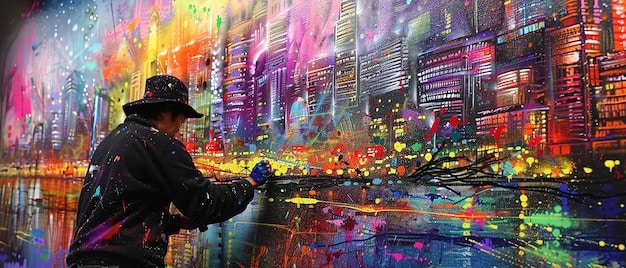
These digital tools augment traditional methods, creating a powerful layered approach to authentication. They not only protect collectors from counterfeits but also empower artists with greater control over their intellectual property in an increasingly global and digital art market. The future of graffiti art investment hinges significantly on embracing these technological advancements.
Protecting Your Investment: Due Diligence and Expert Consultation
Ultimately, protecting your investment in graffiti art, especially in the evolving landscape of 2025, boils down to a commitment to thorough due diligence and the strategic engagement of expert consultation. With the rising value and appeal of this art form, casual collecting without proper verification measures is an immense risk. The burden of proof often lies with the buyer, making their proactive engagement in the authentication process paramount.
Due diligence involves a comprehensive investigation into every aspect of a potential acquisition. It means not just admiring the aesthetic value of a piece but meticulously scrutinizing its background, its physical characteristics, and its journey to the market. This process is not a shortcut; it’s a careful, systematic approach designed to mitigate risk and confirm the legitimacy of your investment. It is the cornerstone of responsible art acquisition.
Essential Steps for Protecting Investments
To navigate the complex world of graffiti art and safeguard your financial outlay, consider these critical steps:
* Engage Reputable Dealers and Galleries: Purchase from established institutions with a proven track record in graffiti art. They have a vested interest in maintaining their reputation and often conduct their own rigorous authentication.
* Demand Comprehensive Provenance: Always request and thoroughly review all available documentation related to the artwork’s history, from creation to current sale. Be wary of gaps or vague details.
* Seek Independent Authentication: Even if a dealer provides a certificate, consider commissioning an independent expert authenticator. Their objective opinion, backed by forensic and historical research, is invaluable.
* Understand the Artist’s Work: Familiarise yourself deeply with the artist’s oeuvre, their typical materials, stylistic evolution, and signature characteristics. This personal knowledge empowers you to ask informed questions.
Moreover, be wary of deals that seem “too good to be true.” In the art market, significantly undervalued pieces are often flags for potential authenticity issues. Resist the urge for impulse buying and always prioritize verification over speed. Consulting with art lawyers specializing in authenticity issues can also provide an additional layer of legal protection and advice, ensuring all contractual aspects are sound.
Protecting your investment is an ongoing process, not a one-time event. Even after purchase, maintaining diligent records and staying informed about advancements in authentication techniques will ensure the long-term security and value of your graffiti art collection. Future-proofing your collection means embracing both traditional expertise and emerging verification technologies.
| Key Point | Brief Description |
|---|---|
| 🔍 Stylistic Analysis | Examine unique artist signatures, letterforms, and specific techniques to identify authenticity. |
| 📜 Provenance Tracing | Verify the documented history of ownership and exhibition to establish the artwork’s legitimacy. |
| 🔬 Forensic Material Checks | Utilize scientific tools to analyze pigments, binders, and materials for age consistency. |
| 🔗 Digital Verification | Leverage blockchain and advanced digital imaging to create immutable records and enhance security. |
Frequently Asked Questions About Graffiti Art Authentication
Authenticating graffiti art is challenging due to its often illicit origins, ephemeral nature, and lack of traditional documentation. Many pieces are created in public spaces, without immediate intent for commercialization, leading to gaps in provenance records that traditional art authentication relies heavily upon. This makes it a prime target for forgeries.
Artists play a crucial role, especially for living artists. Their direct testimony, interviews about the artwork’s creation, and access to their personal archives (sketches, photos) provide invaluable, often irrefutable, evidence of authenticity. Their unique insights into techniques and materials used further strengthen the verification process.
Yes, even digital art and NFTs of graffiti can be faked or misrepresented. While NFTs provide verifiable ownership of a digital token, the underlying digital artwork or its attribution can still be illegitimate. It’s crucial to verify the creator’s identity and the digital provenance, much like physical art, to ensure the authenticity of the digital asset.
Technology in 2025 has revolutionized authentication through forensic material analysis (e.g., spectroscopy, XRF), digital imaging (high-resolution scans), and blockchain technology. Blockchain provides immutable records of provenance and digital certificates, enhancing transparency and security, making it harder for forgeries to penetrate the market.
The most important step is comprehensive due diligence. This includes purchasing from reputable sources, demanding robust provenance, and critically, obtaining independent expert authentication. Never rely solely on a single source of information; cross-referencing and expert consultation are essential for safeguarding your investment.
Conclusion
The landscape of Graffiti Art Authentication: Spotting Fakes and Protecting Your Investment in 2025 is undeniably complex, yet navigable with a strategic, multi-pronged approach. As this vibrant art form continues to gain mainstream recognition and value, the imperative for rigorous authentication grows exponentially. By combining traditional connoisseurship – a deep understanding of an artist’s unique signature and stylistic evolution – with cutting-edge scientific forensics and revolutionary digital tools like blockchain, collectors and institutions can establish robust frameworks for verifying authenticity. Ultimately, savvy investment in this dynamic market demands diligent research, expert consultation, and an unwavering commitment to transparency and verifiable provenance. Protecting your assets now means embracing both the art and the science of authentication.
